Flow: Maintaining messiness
Text by Tyler Allen Bradt, OALA, and Jasmeen Bains, OALA
The discipline of landscape architecture has long strived to assign order to inherently chaotic systems. Medieval cloister gardens and the Persian Charbagh shut out the natural world, creating a perfect green quadrant of lawn. Capability Brown created illusions of nature on the grounds of his wealthy clients, and Frederick Law Olmstead furthered this idea by recreating landscapes based on paintings and ideas of the sublime. Landscape architecture has moved slowly towards a more natural system of ecological design with the popularization of designers such as the late Michael Hough and Michael van Valkenberg. What has remained consistent through time is the necessity of maintenance in order to preserve an idealized image of what we design: a garden or landscape that only changes in the ways we want. As former gardeners and maintainers of the Evergreen Brickworks (2012-2013), and currently as designers in the field, we have unique insight into how maintenance and design are part of a constantly evolving relationship, particularly when designing a space meant to promote the natural native landscape.
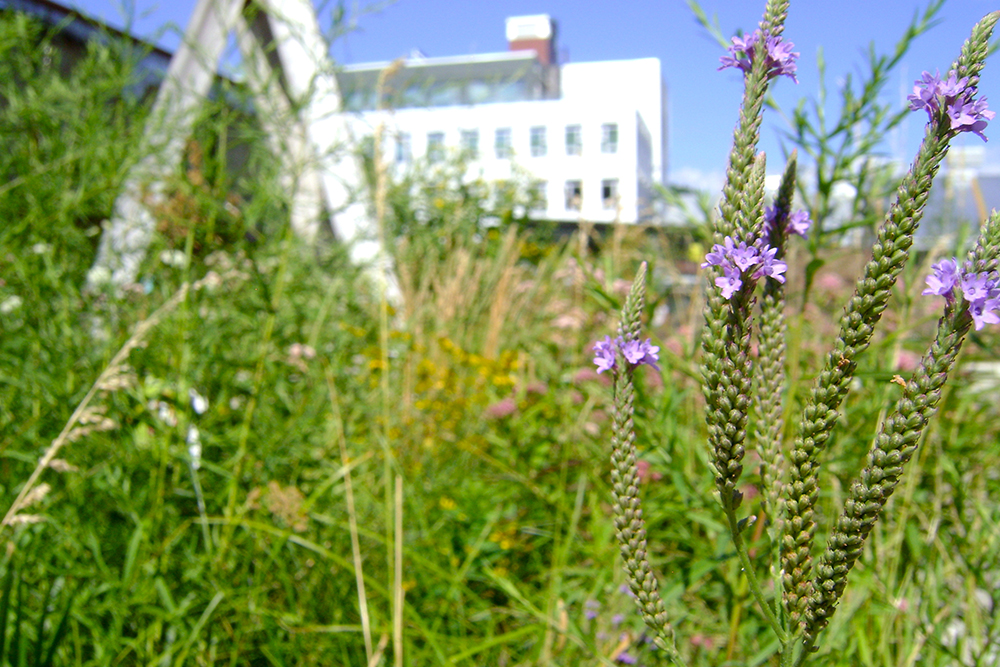
In discussing the Brickworks landscape, we will focus on the site managed by Evergreen: a national not-for-profit which is under different management (and pressures) than the City-operated Weston Family Quarry Garden designed by Michael Hough in the 1990s. This space, designed by many hands from various firms including DTAH, The Planning Partnership, and Claude Cormier, and operated by Evergreen, is connected to the Quarry gardens beyond, yet feels like a separate place. Numerous buildings‑—some housing facilities and some still sitting empty—and a large amount of official programming mean this site is at least partially occupied for for one event or another much of the time. These events include large weddings, beer festivals, farmers markets, summer camps, and the daily restaurant and garden centre. While the buildings are meant to showcase sustainable retrofitting solutions, the design of the Brickwork gardens was meant to be a showcase of native ecotypes, with each garden having a theme or specific purpose relating to the native ecologies: a Fall garden (late flowering perennials), a meadow garden (tall grasses), a seed source garden (species with seed sources for birds). While these gardens used exclusively native species and focused on promoting important ecological functions, the landscape remained a place of program and, as such, an inherent tension always existed here between “messy ecosystems and orderly frames,”
as first introduced by Joan Nassauer’s article of the same title in 1995. Though Evergreen strives to showcase native plants and their benefits, the landscape must cater to those who use the space, who pay to host events here or support the organization through donations. Donor politics plays a part here as well, whether intentional or not. With many of the gardens now named for a donor or organization such as the Tiffany Commons, or the Butterfly Garden supported by Duncan and Joyce Phillips, there is an unspoken need to keep these spaces more pristine so as not to draw the ire of the donor.
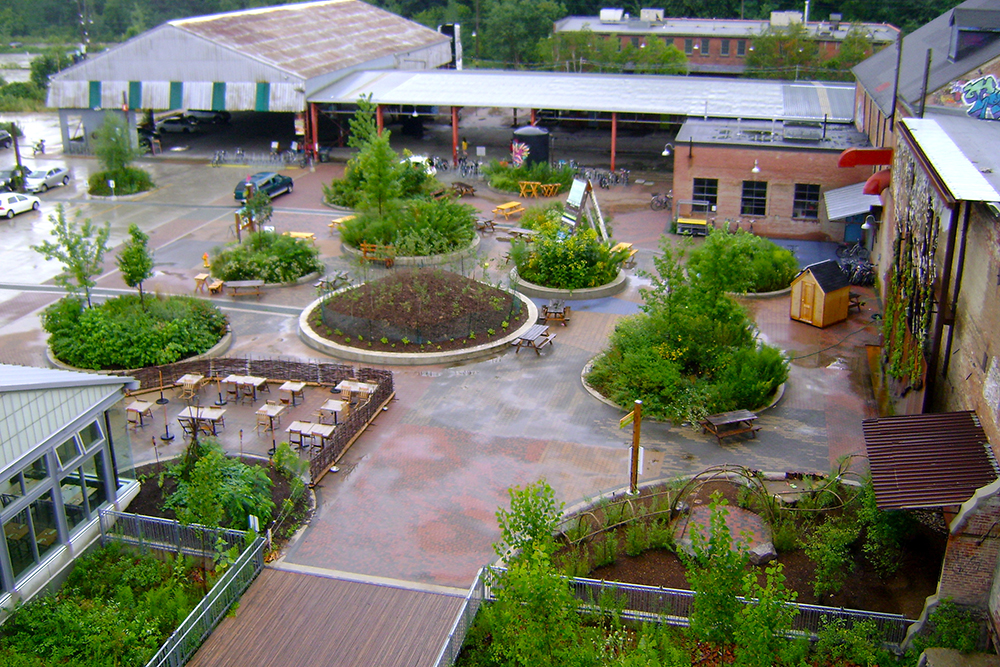
As mentioned above, landscape architecture has been moving towards a natural aesthetic in the last few decades. The Highline by James Corner Field Operations, for example, or Corktown Commons by Michael Van Valkenburgh and Associates are perfect imports from our favourite rural escapes in appearance. What is unseen is the level of planting design and, more importantly in the long term, the level of maintenance that is required to achieve this aesthetic—a maintenance typology that has yet to be truly established.
As designers, though, we are aware of how real ecologies operate. We don’t often make allowances for, or take into consideration that natural landscapes will act natural in our designs. Landscapes constantly move towards entropy—through growth, pollutants, competition, and changing microclimates. Though planting plans are created with the expectation of evolution (trees will grow, invasive weeds will be removed), how often are plans for management, tolerances for increased and unexpected diversity, and flexibility to change included in designs? Scope, knowledge, or difficulty restrict us designing past inspection timelines determined by the client. At the Brickworks, a dedicated summer gardener in addition to weekly community gardening groups weren’t enough to maintain constantly shifting ecosystems in a static state. Natural, dynamic landscapes in urban settings are messy, not idealized versions of untouched wilderness. Do we need to embrace the aesthetic of messiness or do we need to develop a better methodology of designing for change?
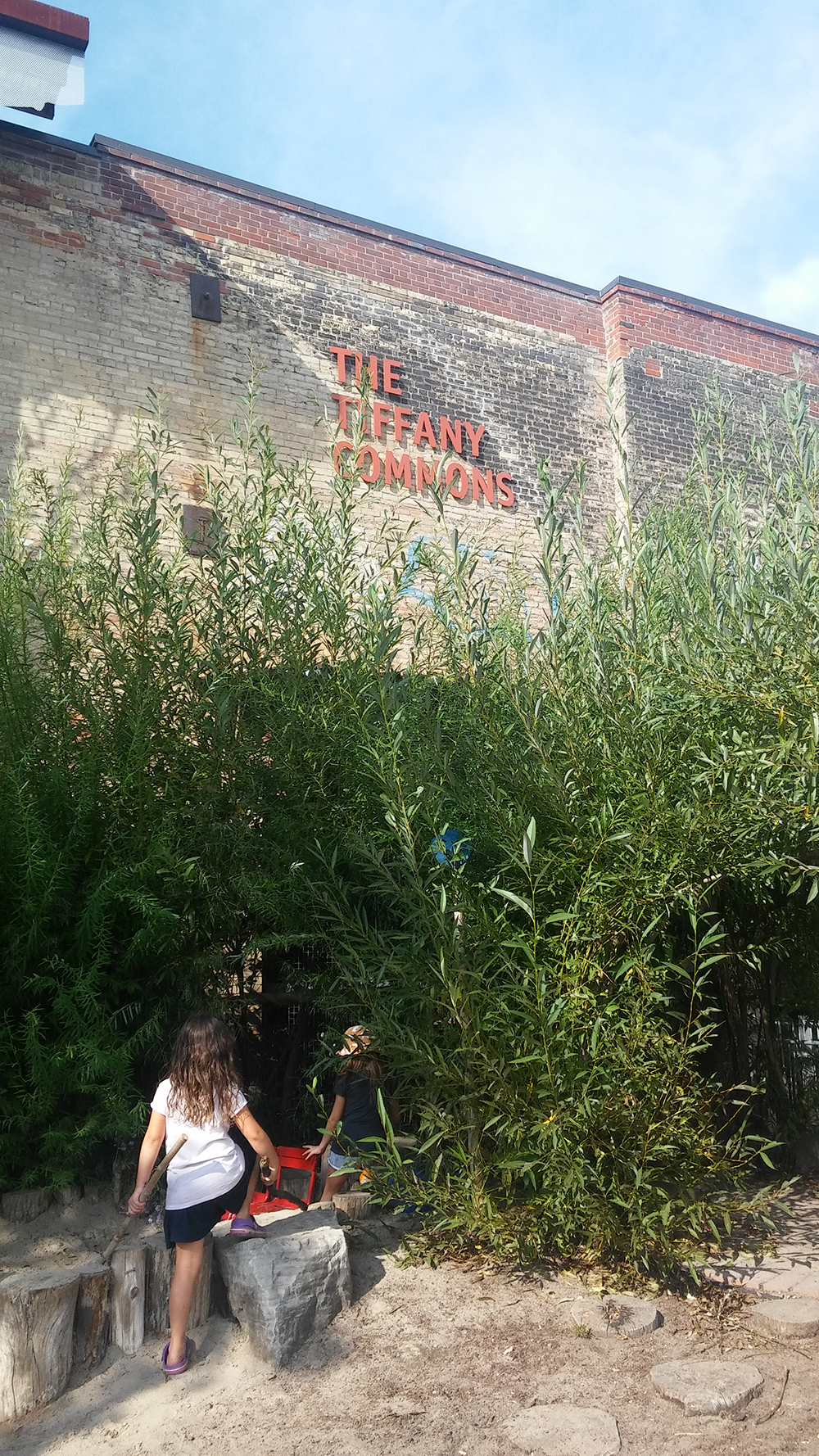
Maintenance and planting strategies need to evolve over time to best fit reality. In our experience at the Brickworks, design needed to occur regularly in order keep the gardens aesthetically pleasing and functional native systems. If a plant was failing in a particular location, it would be replaced with something else, rather than be replanted. If a plant was able to compete with invasives, they were inter-planted with species that could compete. In this way the Brickworks functioned as a constant experiment rather than a one-time solution; maintenance evolved in response to weekly changes and became a cyclical, experimental strategy of trial and error. The original plant lists for the gardens were developed jointly by landscape architects at DTAH and Evergreen staff. Great effort was undertaken by these designers to find and use species that are rare in Ontario, especially in urban landscapes. This attitude towards the planting palette provided an incredible opportunity to find and use plants rarely seen in Toronto—though, in the implementation, concessions were required due to plant availability at local nurseries.
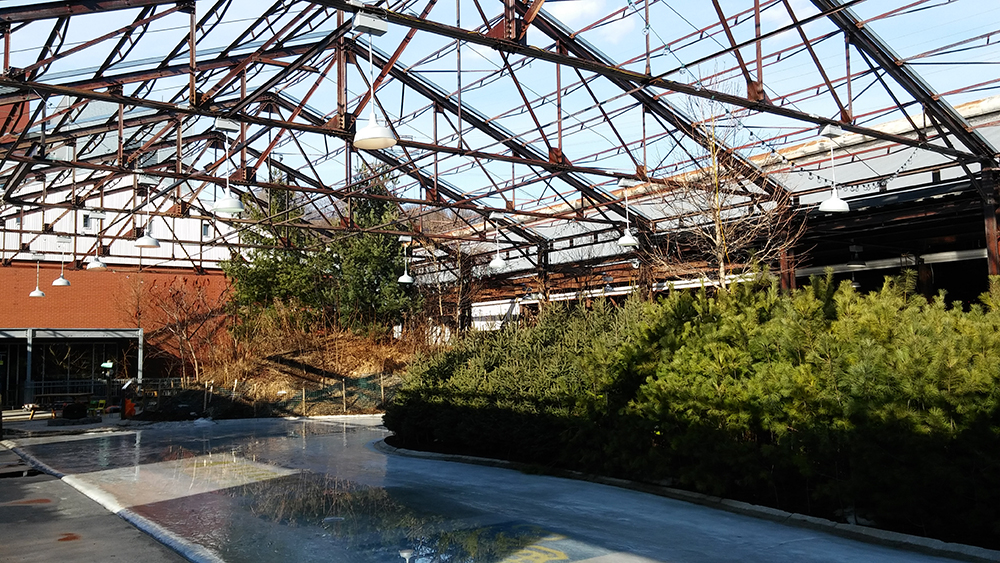
When we started as gardeners, the planting was in the second and third year, and much of the landscape was not yet established. While perennial species take at least a year to truly root themselves into a landscape and spread, shrubs and trees take even longer to establish. Within this time, many of the gardens were already being taken over by invasive species, in addition to opportunistic native species. Only a single season after installation, gardens such as the spring flowering garden, reliant on many species more comfortable within a forest environment than an open plaza, barely resembled the original design intent of bellflowers and geraniums. Originally, an attempt was made to remove all species not intended to be there and to replant those from the original lists. But, over the course of the year, it became obvious this was not a sustainable practice. We had to make decisions as to what was most important: retaining the original design intent or developing a garden that required less maintenance and included species that could establish themselves more permanently. We observed in situ microclimates, optimal growing conditions, and spaces with varying degrees of activity and determined specific gardens that would receive a higher level of care and maintenance in comparison with the rest of the site based on factors such as aesthetic or location.
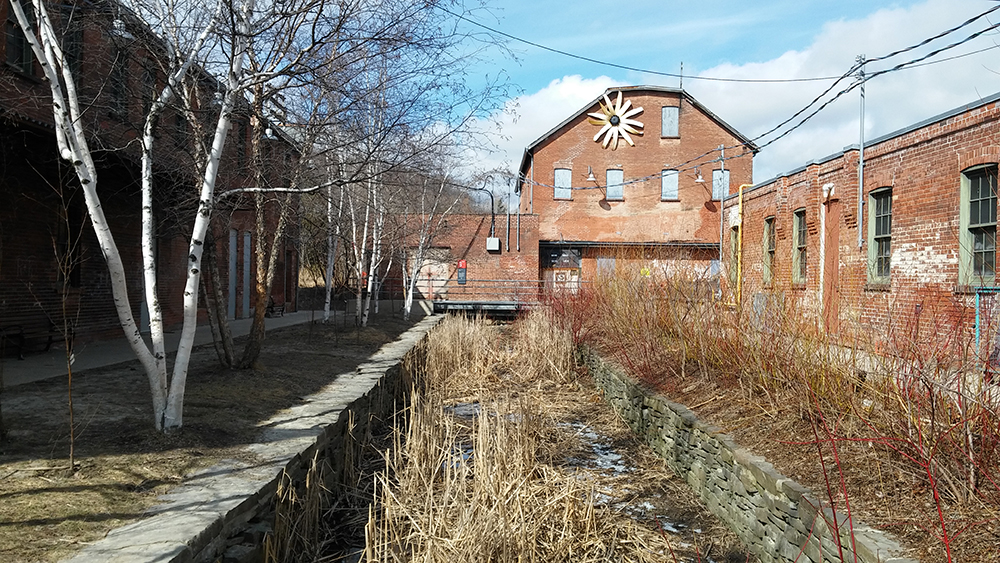
We found new opportunities as well. For instance, Cottonwoods and Trembling Aspens began to sow themselves within gardens across the site. Rather than removing these to retain the original plant lists, we mostly allowed them to remain. These are fast-growing, resilient native species growing on their own and establishing perfectly to their growing conditions. As such, they are among the few species capable of surviving in competition with invasive trees like Tree of Heaven and European Buckthorn. We therefore felt it important to nurture this natural evolution.
We also determined differing maintenance styles for different areas of the landscape. The highly public and formal round gardens called Tiffany Commons, located at the main forecourt, received additional maintenance and an attitude towards “cleanliness,” retaining as many of the original plant lists as possible while allowing for new infill planting. At the edges of the property where the site borders Mud Creek, the rail lands, and Bayview Avenue, a laissez faire strategy was taken leaving these gardens “messy.” Maintenance focused only on removing invasive species and general infill planting, allowing volunteer groups to plant additional perennials and shrubs that had performed well in-situ.
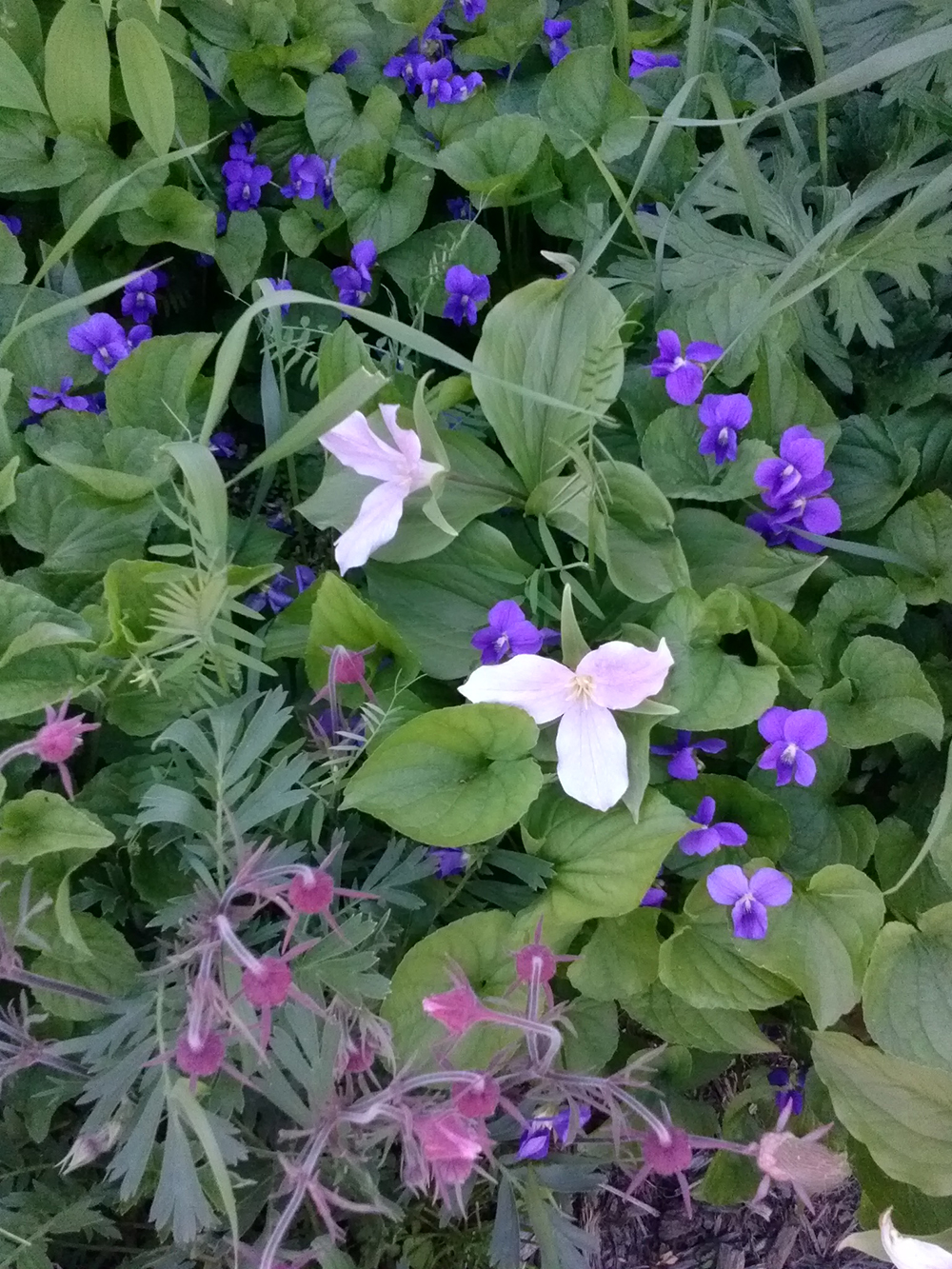
On one occasion, we determined some invasive species might be beneficial to the landscape. The steep northern slope, just beyond the buildings, had suffered a small slide and was prone to erosion. It had native trees and shrubs, but these were seedlings and unestablished, making the slope vulnerable. In the open space between trees and shrubs grew an enormous colony of Canada Thistle (not actually native to this country). Rather than attempt to remove these plants, they were cut off at the base, so the long taproots of these thistles, usually the reason they are so maligned, would help hold the soil together while the trees and shrubs established. Now, years later, the native plants are beginning to shade out the thistle while their own root systems build a network to hold the soil together.
If landscapes are constantly evolving, why are they treated as static architecture? Our experience working at the Brickworks showed us a landscape that functioned more as a constant experiment than a one-time design solution. We suggest the involvement of designers in the field needs to also be constantly evolving. Expectations of our design needs must acknowledge that change will and should occur. Developing maintenance plans and alternative solutions for different scenarios could be worked into designs and scope. Solutions that allow for ease of maintenance tend to favour simplistic planting palettes and schemes that don’t allow for the diversity necessary for healthy or interesting ecosystems. We know the issues associated with monoculture planting schemes and we are trying to move away from such designs. As our designs increase in complexity and diversity in order to improve long-term resiliency, our maintenance regimes should adapt as well. It is our role as advocates for ecology to ensure our naturalistic design notions endure into the future by embracing the entropic value of landscapes. The evolution of maintenance should work in conjunction with evolution of the ecology. As designers, we should be designing for the entire lifecycle of the landscape rather than for a finished landscape experience. This includes maintenance strategies and programs projecting multiple years into the future and incorporating annual assessment and adjustment requirements.
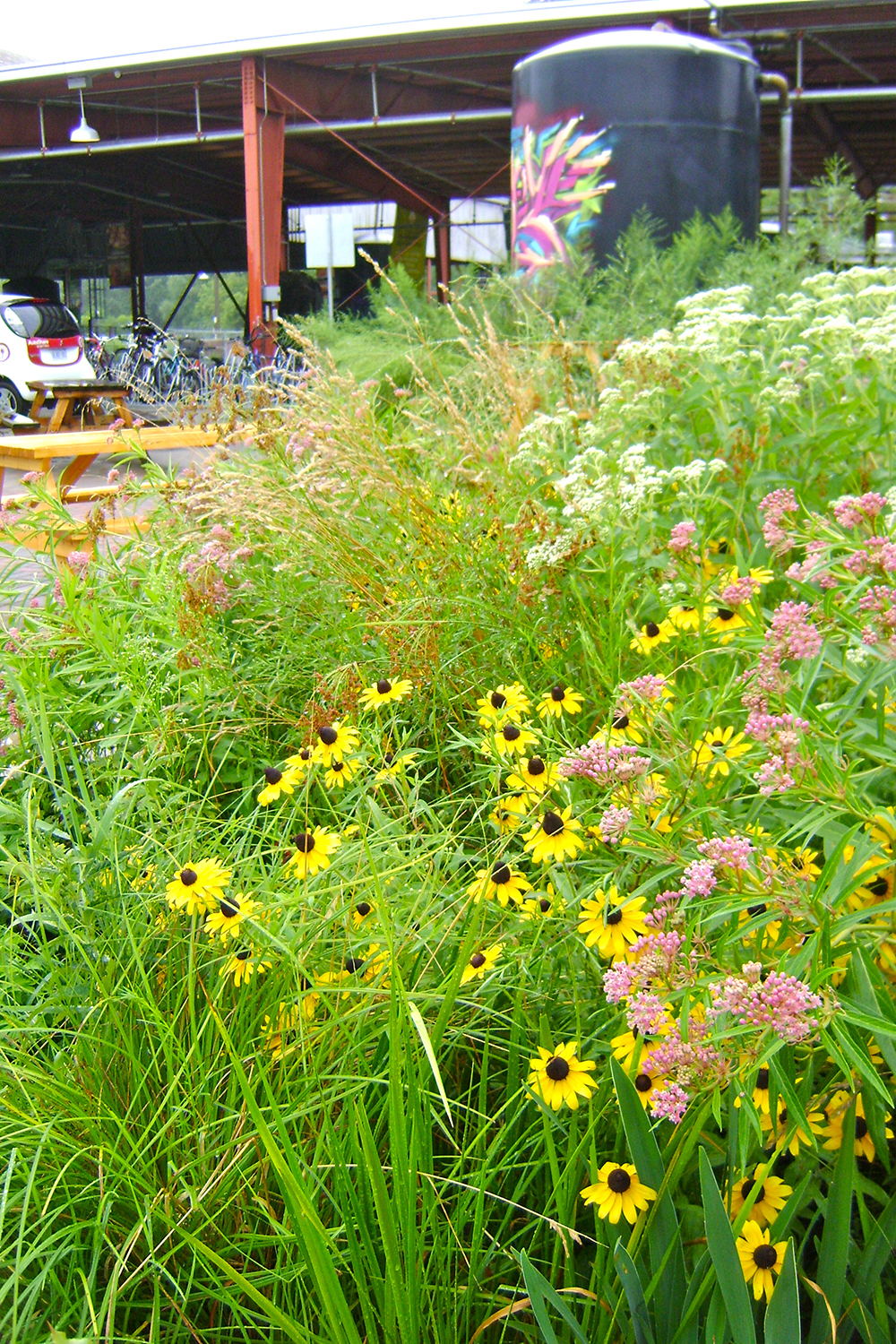
BIO/ Tyler Allen Bradt, OALA, CSLA, is a landscape architect and ecologist based in Toronto. He is a Design Landscape Architect and Project Manager at The Planning Partnership.
Jasmeen Bains, OALA, CSLA, is a landscape architect practicing in Toronto, but rooted in Pacific Northwest ecologies. She is a Landscape Architect and Project Manager at PMA Landscape Architects.
